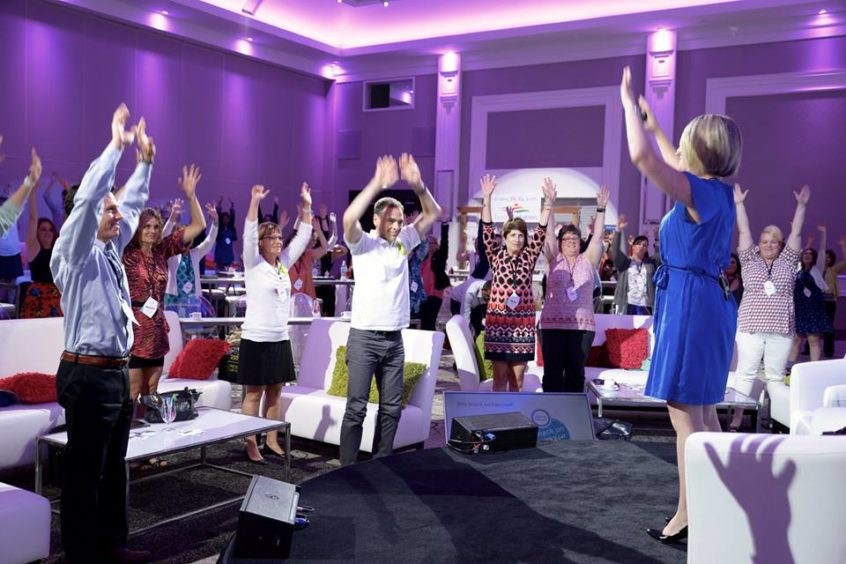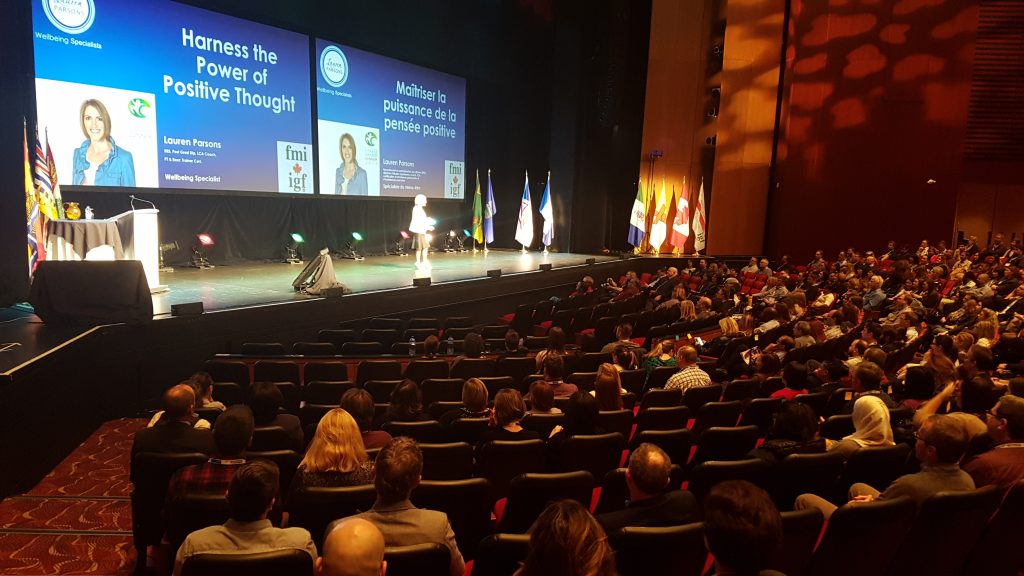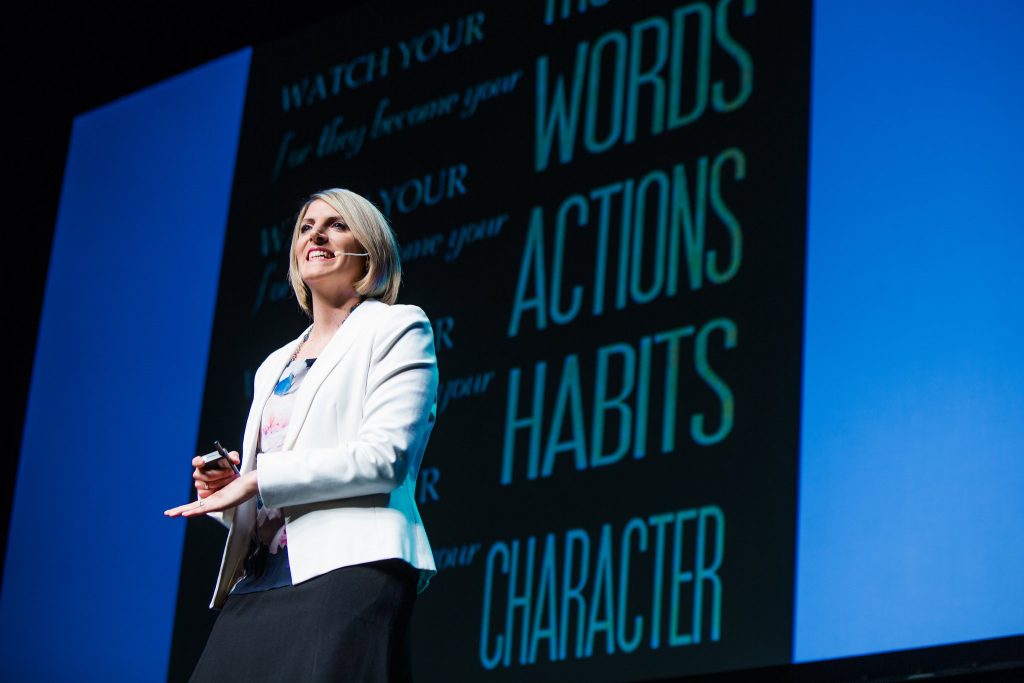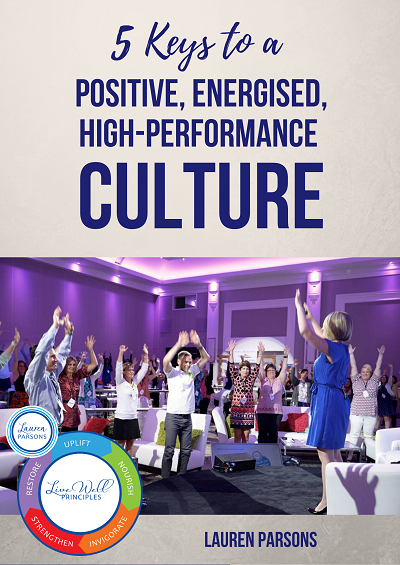Conferences are a fantastic professional development opportunity, offering both a chance for learning and innovation and to network with others in the same field. Organising and hosting a conference however takes great skill and care to create a balanced event that is not only memorable and enjoyable for attendees but also equips them with real knowledge and new ideas to apply.
Here are ten areas to focus on to make your next conference a huge success:
1. Make it Audience-Centric
The most important thing about any conference is the outcome for those that attend, so the starting point needs to be with them. What do they want? What style of delivery? In what environment? What will you do differently to what’s been done before?
Spend time defining who the conference is for then either brainstorm or ask them what outcomes they are after. If you have access to an association member list or a network of likely participants, survey them to find out what they are most interested in.
What do they most want to get out of this event? When you begin by building your conference around achieving those outcomes, rather than just doing what you’ve always done, you’ll create an event that hits the mark.
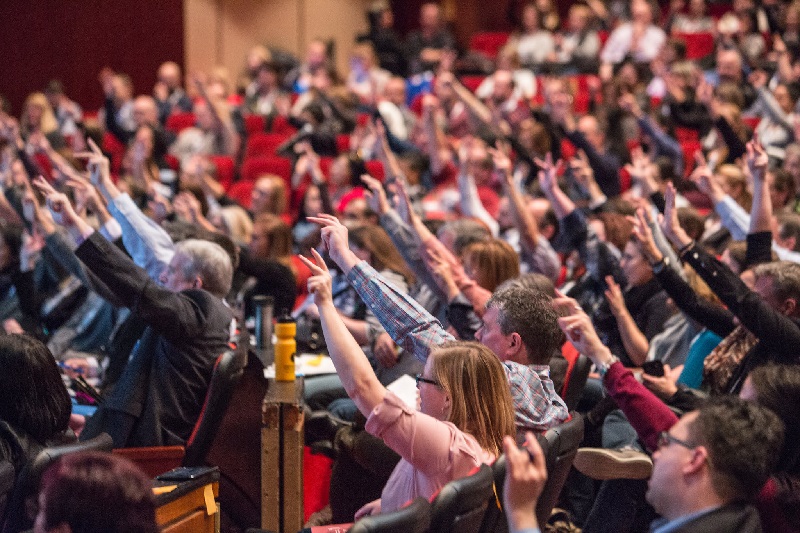
2. Set the Atmosphere
This is where you get to be creative. Everything from your venue, the décor, the menu and the seating through to the schedule for the day, your speakers, any entertainment or activities – together it all creates the atmosphere.
Choose some key words. For example your event could be professional, innovative and boundary-pushing; calm, restorative and nurturing; positive, uplifting and empowering; connected, human-focused and sustainable; or adventurous, creative and fun.
Imagine how different elements will help create your desired atmosphere. What music will you play? What experiences will you surprise and delight attendees with? How will people feel as they walk into the venue? What sort of speakers can they look forward to hearing? What will meet their eyes as they arrive?
I attended a conference once with a mixture of seating types, from low couches and colourful bean bags in the front row, to coffee table settings, then bar leaners and lastly comfy chairs on raised platforms at the back. Colourful pens, highlighters and paper on the tables and vibrant lighting made the space feel uplifting and creative from the moment you walked in.
Once you’ve defined the atmosphere you want this can be hinted at in the way you communicate about the event, starting with your promotional material, following through to your tickets, emails, and lanyards etc. so that you build the expectation long before people even walk through the doors.
3. Secure Impactful Speakers
For most people, the key reason for attending a conference, is to hear fantastic speakers, who entertain, enthuse and empower your audience with new ideas or new ways of looking at things. So investing in the right speakers is vital to a successful conference that people will rave about.
Picture your theme and the atmosphere you want to create and pick speakers who will add to this. Get personal recommendations, check out their speaking reels and talk to previous clients to check how well they have delivered in the past. Find out: Were they easy to work with and prompt sending information through? Did they attend the whole event and tie their message in with what others said? Did they stick to their timeframe? Did they make themselves available to chat to audience members? All of these things add massive value and enhance your attendees’ experience.
You can get creative once you have a shortlist and ask potential speakers to send you a 2 minute video about the topic you’ve requested and how it will fit in with the theme and atmosphere you wish to create. You could ask for all submissions to be done this way, by opening up a call for speakers, similar to what TED Talk conferences often do.
Once you’ve got your speakers confirmed, keep up the communication with them. Send them a speaker’s kit with key info on your overall objectives and theme, as well as info on other speakers, the full event programme, key timings to respect and any relevant travel, accommodation and transfer details.
4. Structure Your Day Well
The timings and formats of sessions are important to ensure a good pace and flow throughout the day. Human beings can only focus for periods of around 90 minutes, after which time a 20 minute break is needed to recharge.
One of the challenges of conferences is that the entire day can be “full on” for attendees, with learning and networking taking place back to back throughout the day. So plan some restorative time into the schedule where possible. A two minute reflection time after a session ca be powerful as reflection is key to learning and gives the mind a chance to wander which enhances idea integration and retention.
The human brain craves variety, so have a mixture of different session styles. After the welcome and housekeeping it’s ideal to open with a keynote to set the scene. Then workshops, interactive sessions, roundtables, Q and A sessions or panels can be used throughout the day to provide variety.
Ensure that your panel host is equipped with techniques to add some rapid fire questions, or fun techniques such as single sentence answers, speaking until they draw a breath, scale of 10 or “this or that” questions, to keep panellists on their toes and avoid too many long-winded answers. An entertaining panel moderator can make your panel one of the conference highlights.
5. Factor in the Human Element
Often, I see exhausted people returning home after a conference having spent 8 hours indoors under fake lighting, having been fed less than ideal processed food choices and bombarded with information.
Thankfully this isn’t always the case, but it does take thought and effort, particularly with certain venues to ensure that people are equipped for the amazing day of learning that you are providing.
Ensure that participants get outdoors or at the least get natural light frequently. Set the food table up outside and provide picnicking spots where people can mingle in the fresh air if possible. Getting sunlight into the retina of your eye helps improve energy levels in the afternoon when the inevitable slump occurs.
6. Plan for the Slump
You know that it’s going to happen, right? About 30 minutes after everyone’s back from their lunch. Digestion is on high and energy levels are on an all-time low. Even participants who want to remain alert and listening will struggle to focus during this time.
This is why it’s ideal to create a change of pace here. Have an upbeat panel session with lots of interactive questions from the audience and reward question givers in a fun way to make it a game. Have an energetic speaker who will do more than just speak, but get the audience taking part in activities and interventions to keep them engaged.
You could use this time to include restorative practises such as breathing or mindfulness, create discussion groups at each table, or set a task for attendees to work on and present to another group. There are endless ideas of ways to manage the slump. It starts by acknowledging the challenge you face and being imaginative with techniques to manage people’s energy and get them through it in a positive way.
7. Create Connection
One of the huge benefits of conferences is the opportunity to connect with colleagues from the same industry or field of interest. A vital part of your role as conference organiser therefore is to facilitate this. Small tweaks can make a big difference here.
Most people want to meet others. Some are good at introducing themselves and creating connections, but most people benefit from a bit of help. Have specific networking activities, such as giving out playing cards and inviting people to find someone with the same number as them. Then ask them to form a small a group of others with the same suit. This creates a fun way to get people mixing with strangers rather than sticking with those they know.
Add one to two minute interactive activities like this between speakers and not only will you create movement to refresh the brain, you also strengthen those human connections.
Encourage people to speak to someone they haven’t met during the break and find out how many things they have in common (add a prize to get the competitive souls really engaged in this!)
Speakers should be encouraged to create conversations between attendees during their talks as well, rather than providing a monologue. It’s through the presentation of new ideas and the discussion of those ideas that participants will learn the most and come away ready to try ideas out.
8. Leverage Technology
Sometimes we love it, sometimes we hate it, but one thing is for sure, technology is here to stay. It forms a critical part of your conference experience, so be sure to have a great team on hand to manage technology, test everything early as possible and have backups for things like slides, microphones, connections and audio or video files.
One of the great things is how interactive technology can be. Try using a conference app which can be set up in advance, or freely available apps such as kahoot which can be downloaded by participants on the spot and linked to a live quiz which you can run in real time.
I once attended a conference which used their app for audience members to submit questions and bump other people’s questions so the most popular topics were the ones asked on the day. It also allowed voting on a range of breakout topics so that the 4 most popular topics were covered by facilitators in the afternoon. This sort of adaptability means you can cater to the needs of the audience on the day – who better to tell you what they want to hear about, than them?
9. Be Sustainable
With increasing awareness around sustainability issues, it’s not just the right thing to do for the planet, it’s also important because of the message you portray to all attendees. If washable crockery and cutlery aren’t available, opt for eco-friendly cups, plates and cutlery.
Consider adding reusable mugs to the conference packs for hot drinks. If branded, they will double as a great reminder from the day and a fantastic marketing tool long after the event, while also serving a practical purpose on the day.
10. Gain Feedback to Constantly Improve
Most of all, get quality feedback from attendees. If you’re holding a multiple day event, it’s worth building in short feedback surveys at the end of the first day or two, so that you can adapt and change things immediately, to improve participants experience in real time.
Make your feedback surveys as concise as possible while also gathering the most relevant information. Before you start, consider how you’ll use the information you gather and design your survey with that in mind. If something isn’t useful, leave it out.
Have an incentive for survey completion so increase the range of feedback you get and share the results with attendees so that they know they are heard.
Creating and hosting a conference can be a daunting task, managing multiple expectations and of course dealing with the challenges that will inevitably arise along the way. By using these ten points you’ll ensure that your next conference is the best it can be and create an unforgettable experience for those that attend. I wish you every success with it!
…
Want to find out more about Lauren’s speaking topics?
Simply email Lauren or arrange a time to chat, or feel free to download her Speaker Kit today.
Want to boost your Wellbeing?
What kind of difference do you want to make to your organisation? By creating a positive, energised workplace culture, you will boost morale, improve team dynamics and gain a reputation as a desirable employer. Not only will your people perform at their best, you will easily recruit and retain fantastic people, all driving your company to success.
To get started with some practical steps to put in place to boost the health and wellbeing of your team, download a complimentary copy of my eBook 5 Keys to a Positive, Energised, High-Performance Culture.
Simply enter your details here so we can email it out to you.
It will equip you with checklists of tips and ideas you can implement straight away to help your team thrive.
If you’d like to connect with me to discover how I can help your team thrive, feel free to book a chat into my online calendar.

…
If you enjoyed this article, please share it so it can reach more busy people and help them improve their health and happiness. With thanks in advance.
Share this Post
